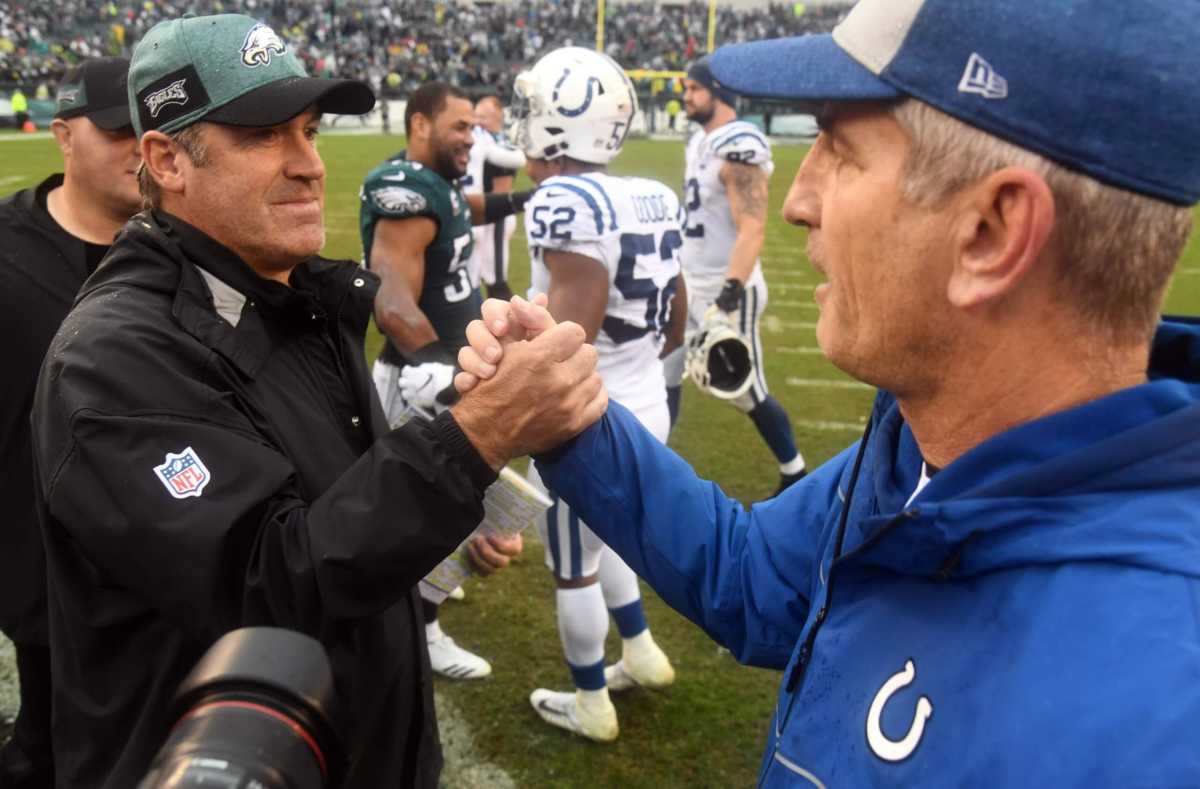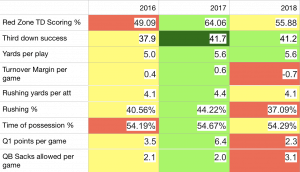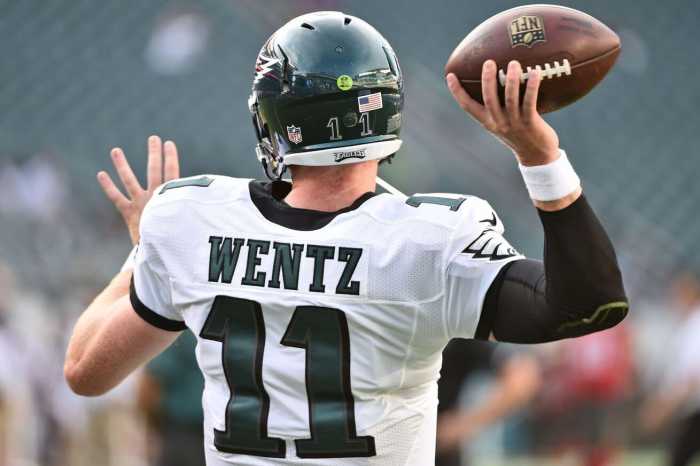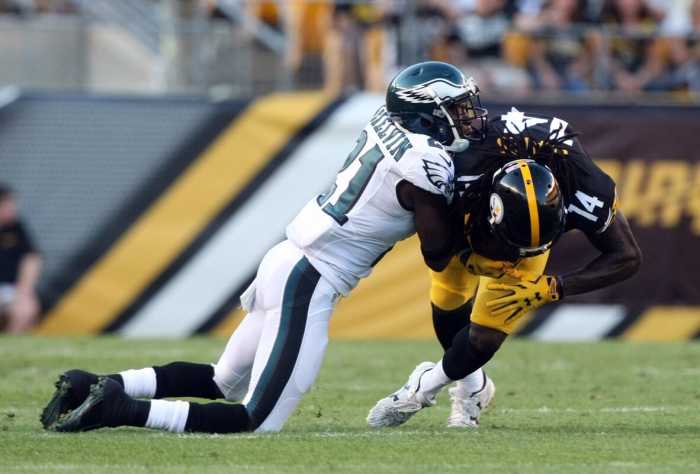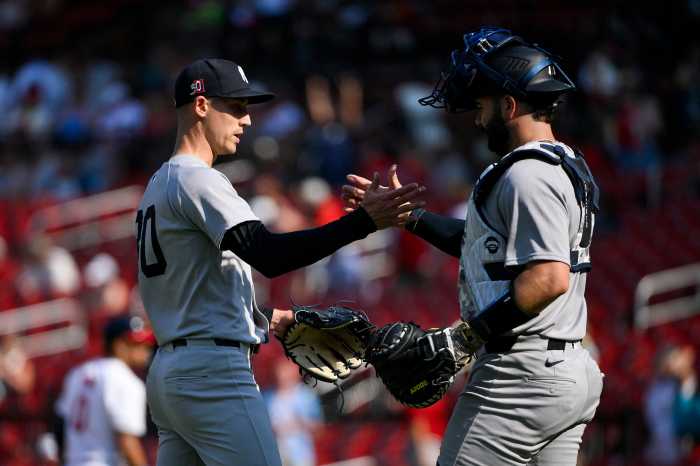The Eagles offense isn’t exactly firing on all cylinders right now. A 20 point outing against the Cowboys at home in a prime-time game highlighted just how many holes have opened up in Pederson’s previously high-flying unit. This has caused a lot of people to point to the recent success of Frank Reich and John DeFilippo, two former coaches of the Eagles who helped build this offense, as primary reason for the setback. But is that really the case and just how much worse is the offense without their presence?
I decided to go and look at some key areas that would show either a step forward or step back since the group’s gathering in 2016. A red box implies the worst year of the three, a yellow the second best and a green as the most successful.
There are hundreds of metrics we could use to see if the offense has taken a step backward or not, but I think these paint some different pictures. We know the team aren’t finding the end zone this season, but why?
A change of heart?
Well, what’s interesting straight out of the gate is that the Eagles are still averaging 54% in time of possession per game which ranks among the league’s best. If the offense is on the field for a greater amount of time than the opposition, one would assume they would score more points and win more games. Time of possession has long been one of Pederson’s primary focuses and it’s not like that has dipped massively in the absence of Reich and DeFilippo. If this had dropped quite a lot, it may be a sign that there has been a deviation in terms of offensive focus, but this isn’t the case. Although a simplistic lens to look through, it at least tells us that the way the offense is being conducted is extremely similar.
Turnovers:
The biggest alarm bell in my eyes is the turnover margin, which has gone from +0.6 to -0.7 within the space of one year. Turnovers can be put down to ‘luck’ or forced error in the majority of situations. It’s very rare that a coach will impact a turnover, it’s mostly down to the execution of players on the field. With that in mind however, DeFilippo was the QB coach for Carson Wentz, who since returning from his torn ACL, has fumbled in every single game with the exception of Sunday’s loss. Press Taylor, the man promoted to take the QB coaching role worked as an assistant coach beforehand and let’s be honest, Wentz is still firing at a 71% completion clip, throwing 15 touchdowns and 3 picks. It’s not like Wentz has regressed, but ball security is a very coachable trait.
Third downs:
One of the biggest myths with this team right now is their lack of execution on third down. However, they’re just 0.5% less successful than they were last year, which is staggering to me as it’s still an improvement over Pederson’s first year in charge. What I decided to do was look back at the success rates of certain distances to see if a change of players could be forcing this narrative. (2018 numbers recorded before Sunday’s loss)
Third and 1-2
2017: 66% (23/35) 20 of these plays were runs and the most common play was an inside/outside zone.
2018: 60% (12/20) Without specific play available just yet, a 6% drop is certainly concerning and could most likely be attributed to the loss of both Blount and Ajayi.
Third and 3-5
2017: 47% (28/60) 12/60 were runs and believe it or not, one of their most common plays again was inside/outside zone.
2018: 41%(12/29) Another 6% drop. The Eagles have been forced to throw from this range due to a lack of rushing success.
Third and 6-10
2017: 37%, (31/83) 11% were runs.
2018: 31% (21/66) Another 6% drop (surprise surprise) and obviously in third and long, the Eagles would have to throw more regularly. The lack of success here could be down to a lack of playmakers early on or other factors we’ll touch on.
But here’s something interesting. In 2017, the Eagles called screens on third down 13 times. There was an average distance of 12.7 yards when called and they converted less than 25% of the time. Even with Reich and DeFilippo gone, that hasn’t changed at all.
The red zone:
This is interesting and easily the most alarming for many as the Eagles are punching the ball in for 6 far less efficiently as they were in 2017. The big difference here is that Frank Reich conducted the red zone offense and I think a lot of that decline can probably be placed on the change at offensive coordinator. Reich has been wildly creative in Indianapolis as Head Coach and you don’t need to look any further than the red zone to see that. After last year’s abysmal 40% conversion rate, the Colts are scoring 66% of the time when inside the 20. This may be the one area where the Eagles are sorely missing Reich.
Connecting the dots:
Let’s take every red box and join them together. In comparison to 2017, the Eagles are scoring nearly 4 less points per game in the opening quarter (now less than a field goal per game), are allowing 1.1 more sacks per game, are rushing the ball 7% less than they were and are turning it over far more frequently. Let’s examine those closer.
In terms of scoring opening quarter points, the 15 or so scripted plays that the Eagles run have come under scrutiny after struggling to get anything on the board early all year. The issue is that the majority of those games have seen penalties, mistakes and a general lack of execution.
“We have too many weapons not to score touchdowns in the first quarter.” Zach Ertz said after the game. “We just have to start fast. It’s not like we’re going into games and being surprised by what the defense is doing. They’re doing what they do. They’re not really doing anything out of the ordinary when we play teams. I feel like we have a great scout and going into the game we’re very confident with what we have called. In the second half, typically we get rolling. We just have to find solutions because we have a really big game this week. There’s no other way to put it.”
That also ties hand-in-hand with the fact that the Eagles are allowing a whole sack more per game than they were last year and sit in the bottom of the league when it comes to QB hits/pressures and sacks allowed. If the offensive line is picking up holding penalties or lets up a block and Wentz is forced to throw under duress, the chances of an early turnover or costly error dramatically heighten. It seemingly takes the offense a few drives to settle in every week and I don’t think Frank Reich could impact that, it’s down to execution on the field.
What this and running the ball less all lead back to is personnel for the most part and more importantly, injuries. Here’s a look at the Eagles offensive members currently on IR:
RB Jay Ajayi, WR Mack Hollins, TE Richard Rodgers, WR Mike Wallace.
When you factor in the ever-changing offensive line due to injuries to both tackles and a confusing change at left guard, the fact that Wentz missed the opening weeks of the new season and entire offseason to gel with his new offensive coordinator and injuries to players such as Darren Sproles, this Eagles offense hasn’t found any sense of stability.
While I don’t think the absence of Frank Reich has hurt the Eagles as much as many like to make out, the relationship between a coordinator and his QB is the most important on an offense. That offense spent the entire offseason and opening two weeks running a condensed offense for Foles, who essentially played ten consecutive games as the players grew used to his habits, ball placement and tendencies. Having to re-adjust to a quarterback who is rusty anyway coming off of a torn ACL was always going to take time, let alone when you have to build a whole new rapport with an offensive coordinator.
Do the Eagles miss Reich and DeFilippo? Absolutely. But it;’s not as if they’re looking in the rear view mirror with regret. If both were still on the team, it’s hard to imagine any of the circumstances changing given the amount of injuries and obstacles this team have had to overcome. Sure, both are doing exceptionally well in their new roles, but they wouldn’t have been able to magically turn an offense that’s averaging a league ranked 22nd 22 points per game.
Mandatory Credit: James Lang-USA TODAY Sports

